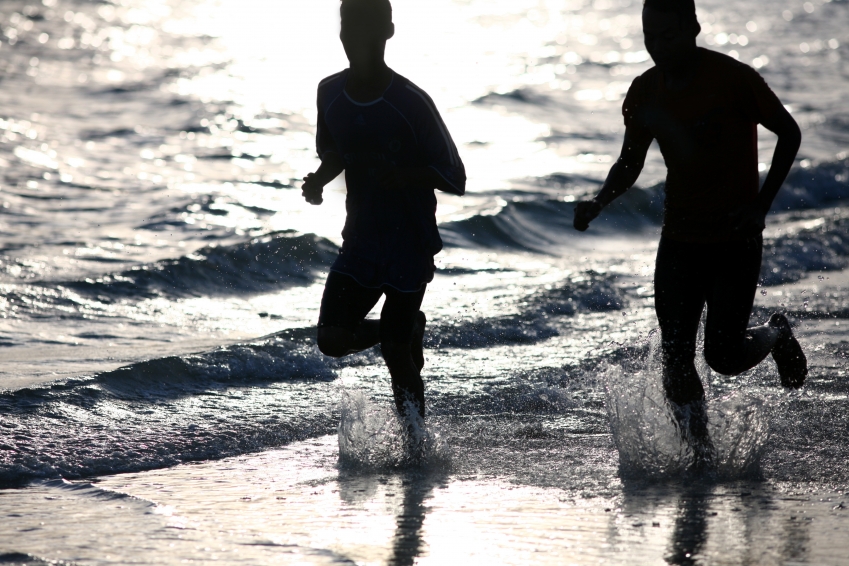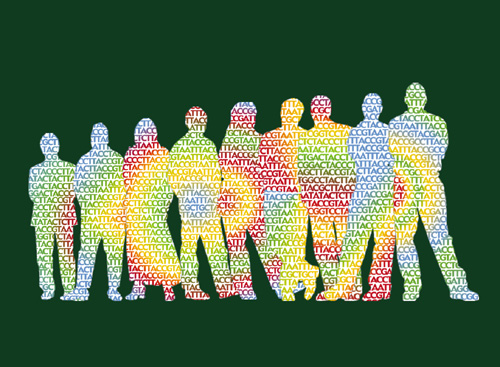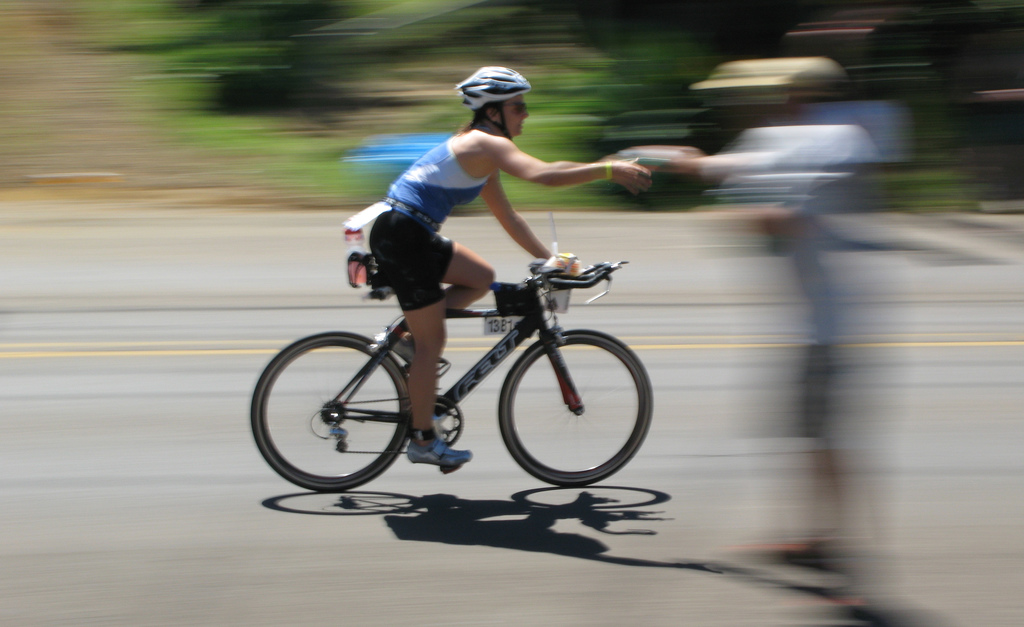Are humans designed to be endurance runners?

Are we designed to run?
“A squirrel can probably outrun most humans.”
— Dan Lieberman, Ph.D., professor of biological anthropology, Harvard University
Have you experienced Zen-like runs in which you glide along, your limbs moving rhythmically, your breath even, your heart echoing the beat of the world around you, and your senses alive? And have you experienced runs where your limbs are heavy and awkward, your breath labored, your joints aching, your brain starving, and your body screaming “STOP”?
Most of us have experienced both types of runs, especially as we prepare for a season of marathons and charity events or as we seek to burn a few calories and get some fresh air. As a physiologist, the wide range of euphoria and misery induced by running has often left me pondering whether we are designed to run, and if so, what type of running is buried in the genes of our ancestors. Now I know the answer:
“We have an evolutionary legacy to be endurance athletes.”
That’s according to biological anthropologist Dr. Dan Lieberman. As Homo sapiens, we are born to run. Dr. Lieberman delivered the keynote Joseph B. Wolffe Memorial Lecture on “Human Evolution, Endurance Running and Injury” at the American College of Sports Medicine annual meeting in Seattle, Wash. His talk was so intriguing that I found myself reading through years of his research. The more I explored the data, the more amazing the evidence became. And clearly, I’m not the only one fascinated with this topic, as illustrated by the recent popularity of books such as Born to Run, Why We Run: A Natural History, and ChiRunning.
Humans are designed to run long distances, according to Dr. Lieberman. By long, he means over 3 miles (5 kilometers) — distances that rely on aerobic metabolism. We aren’t designed to be sprinters, and hence we’ll lose short-distance races against squirrels and other four-legged animals.
The evidence for our long-distance prowess stretches back about 1.5 million years to Homo erectus, and stretches from our head to our toes. Based primarily on fossil evidence, it appears we’ve evolved a range of amazing traits that distinguish us from our tree-climbing primate relatives and that go well beyond the characteristics needed for two-legged walking. These features enable us to regulate our body heat, stabilize our heads so we don’t resemble bobblehead dolls, stabilize our trunks, absorb shock and store mechanical energy.
Some top features that enable us to excel at running include:
A head with a fairly flat face and small nose — which shifts the center of mass of our head back so it’s easier to balance.
A preference for mouth breathing rather than nasal breathing at greater running intensities. While we don’t pant in the manner of many four-legged animals, mouth breathing helps us dissipate heat and offers less resistance and a greater rate of airflow than nasal breathing.
Reduced body hair (fur) and extensive sweat glands that help us dissipate the heat generated by our contracting muscles and thus maintain a stable body temperature. The ability to sweat from our scalp, forehead and face may help cool blood before it reaches our brain.
Wide shoulders that rotate independently of our head and neck, allowing our arms to freely swing while our head aims forward. Wide shoulders also help with balance and stabilization.
Short and light forearms that reduce the energy required to maintain our elbows in a flexed position during running.
A large gluteus maximus (butt muscle) that enhances stabilization of our trunk. This muscle is barely used for walking, but it is used extensively during running and keeps us from falling forward onto our faces.
Large joint surfaces relative to our body mass in most of our lower limb joints (sacroiliac, hip and knee) — which help dissipate impact forces.
Long tendons and ligaments in our legs and feet that act like springs to store and release mechanical energy, thus reducing the metabolic cost of running. These include the Achilles tendon, the iliotibial tract and the peroneus longus muscle.
Arches in our feet that absorb impact and serve as springs.
Compact, rigid feet and short toes that allow efficient use of our feet to push off from the ground during running.
While we are designed for endurance running, our ability to store only about 18 to 20 miles worth of glycogen (sugar), as well as our need to replenish water and electrolytes lost from sweating, suggest we did not evolve to run marathon-length (or greater) distances. Hence the evolution of the electrolyte drink, power bar and race-day water stops staffed with cheering volunteers.
Cruise control
It’s easy for us to take these amazing anatomical structures for granted. We curse when we suffer Achilles tendinitis or plantar fasciitis or get irritated when sweat drips into our eyes. The next time you find yourself lacking motivation to head out the door for a jog or struggling through a run, give thanks to your ancestors. Channel your inner Homo erectus, embrace your big strong glutes, hold your head high and relish the astounding evidence that we are born to be endurance runners — and you may find yourself gliding along filled with gratitude.
Learn more
- Endurance running and the evolution of Homo. D.M. Bramble and D. E. Lieberman, Nature 432: 345-352, 2004.
- The human gluteus maximus and its role in running. D. E. Lieberman, et al., Journal of Experimental Biology, 209:2143-2155, 2006.
- Q & A: Joseph B. Wolffe Memorial Lecturer, Sports Medicine Bulletin, American College of Sports Medicine
Related posts
- Boosting athletic performance with beetroot juice, nitrate and spit.
- Carbohydrates and sports performance: rinse, repeat, win?
- What can pro cyclists teach us about pain?
- 12 real foods for real results: Insider tips from top sports nutritionists
Bonus addition:
This extraordinary clip is from the BBC’s Life of Mammals documentary series that was written and presented by David Attenborough. It illustrates our evolutionary ability to run and run and run…..









I know of some people who can do 84km (ultramarathon) at one go. of course our bodies are not meant to be tortured, and we should always give it ample rest.
I am sure our body has the capabilities of running long distance, however the question to ask back is, do we need to let our body go through such extreme endurance? What are we trying to prove?
That is what I think.
I think some people’s bodies are better for running than others. I know a lot of people that have 1/3 or 1/4 the strength that I have but they can run for miles. I can’t even run 1/3 of a mile.
Wow this is so amazing..I had been watching a discovery channel documentary on the evolution of human endurance, and the prospect was soo fascinating that I HAD to check it out. 🙂 This would explain why I love to run so much…^.^ hahah, but anyways I think humans were designed for endurance so that they could outrun their prey, as the latter can obviously outrun us in speed any day..but perseverance is the key, and the prey would literally be run to exhaustion, since when an animal gallops it cannot pant, resulting in an overheating of it’s body and therefore literally imploding- yuck>.< but anyways, this is the stuff I saw in the whole 5 min I watched the thing, bu found it absolutely amazing. I feel like a dork tho, cuz I'm only 15
Seraphim –
You’re exactly right – this field is amazing. Your comments on perseverance being the key are exactly what Dan Lieberman talks about in a lot of his work. If you love this stuff, consider learning more about biomechanics, sports medicine and/or anthropology. You might also want to check out the book Born to Run. Clearly our bodies were not designed for us to sit all day staring at computers, or to ride elevators and escalators instead of walking.